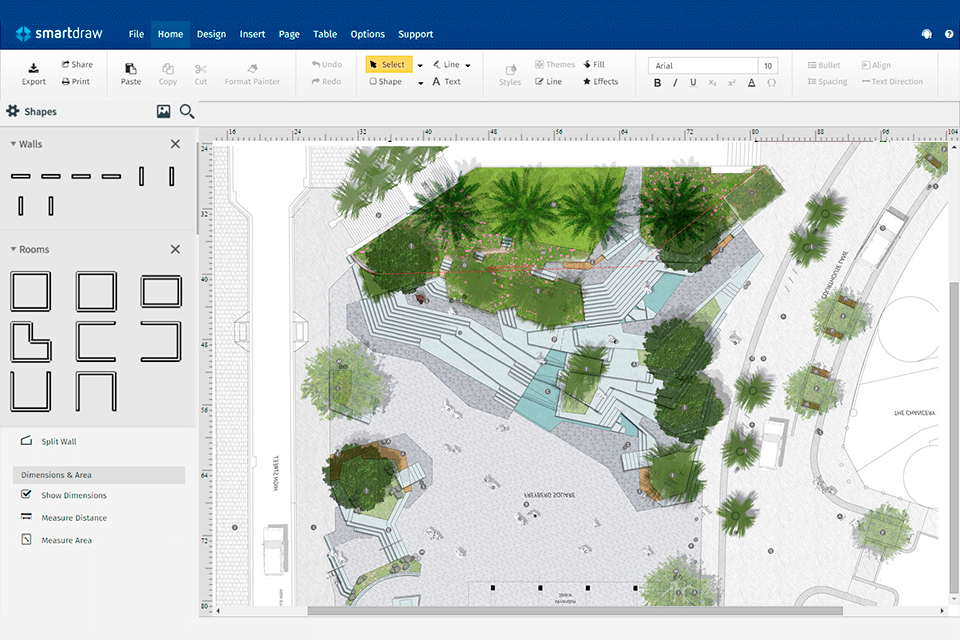Table Of Content

It has pre-built objects like doors and windows to speed up the drawing process, in addition to specific architectural, electric and mechanical toolsets to support different design types. AutoCAD is primarily used as a 2D drawing tool to represent buildings at a basic level, with these drawings then transferred to other software for more advanced 3D modeling processes. We’ll also discuss how to use these tools to step beyond concept drawings and exterior models to design interiors and populate buildings with 3D modeling. If you’re looking to produce 2D architectural plans, AutoCAD is the best choice. It’s the industry standard, with specific architectural toolsets including pre-built objects like doors and windows to speed up the drawing process. For architectural design, Rhino can easily model the complex intersections of curved roofing or any part of the structure that isn’t inherently straight.
Quality Scenarios
A visual programming model represents the interaction between components, how they relate to each other, and how those relationships change over time. An excellent example is an object-oriented program where classes represent data and functions (or methods) are used to manipulate it. The capstone application will require you to use Android Studio, an integrated development environment. Understanding software architecture is an important skill for any software developer to cultivate. Learning how to diagram those patterns effectively can be a great way to help others understand the architecture you’re working on together.
What is architecture software?
Instead you'll have individual functions mapped to an access point (similar to an API endpoint). For example, you could start out with a server that has 8gb of RAM and 500gb of disk space. If your server starts getting more and more request and these capacities are no longer enough to provide good performance, the system can automatically perform vertical or horizontal scaling. A more comfortable option for most companies are traditional server providers.
Create an effective component model
Software architecture organizes where all the raw material (code) will go and how the construction crew (developers) will approach the creation and maintenance of a software system. Similarly, software architecture has a massive impact on software developers. When poorly selected or haphazardly executed, software architecture can hamper developers by boxing them into a system that is hard or costly to adapt.
Service-Oriented Architecture
"Elastic" means that the hardware capacity of your application will automatically grow or shrink depending on the usage your app has. One situation in which on premise servers still make sense is when dealing with very delicate or private information. Think about the software that runs a power plant, or private banking information, for example. Many of these organizations decide to have on premise servers as a way to have complete control over their software and hardware. This distribution of requests is normally performed by a thing called a load balancer. Load balancers act as reverse proxys to our servers, intercepting client requests before they get to the server and redirecting that request to the corresponding server.

Now that we're writing readable code that's easy to maintain, it would be a good idea to really understand the 3 major programming paradigms and the way they influence how we write code. They are directly related to system’s architecture, design, source code, configuration, deployment parameters, environment, and platform. Now, in the final module of the course, you will evaluate the proposed architecture to extend the functionality of the example Android code base. The architecture you choose will affect every part of your software, from its security and efficiency, to its modularity and maintainability. In this module we will examine the different architectures that you have to choose from to shape your software. Here’s an example of a reference architecture for a simple, containerized application.
The Designers Using the “The Sims” as Architectural Software - Dwell
The Designers Using the “The Sims” as Architectural Software.
Posted: Tue, 23 Apr 2024 14:12:39 GMT [source]
But what really makes SketchUp stand out is the offer of genuinely free 3D architecture software. It’s limited, of course, but gives professionals a feel for the product before committing to a commercial license. After a few simple tutorials, designers should be able to work rapidly to construct complex solid geometry using it.
In a client-server architecture, there are multiple nodes or clients connected over a network or internet connection who communicate with a central server. Similarly, thorough software architecture can help your engineers quickly locate and fix bugs. Having a great architecture lays the groundwork for how you will deal with performance, fault tolerance, scalability, and reliability in the future. Choosing the right architecture for your software will lead to stabler performance under stressful conditions as you scale up. Educative Cloud Labs let you tinker with AWS cloud services — without any setup, cleanup, or hassle. It stores static content (information that doesn't change often, like an author's bio or an MP3 file) separately from dynamic content (like stock prices).
Another Autodesk product, 3DS Max is one of the best architecture software packages for 3D designing. This was the first software to offer hardware-accelerated rendering of 3D images. SketchUp is a good option for beginners who can use it to practice 3D modeling before moving on to more advanced software.
But that drastic approach is not usually necessary, especially when software architecture is considered at the beginning of the process. The influence software architecture has on the scalability of a piece of software — and usually the company that uses it — makes decisions about software architecture very important. Ideally these decisions get made early on in the development process before any code is written, according to Tedrick.
While the terms “software architecture pattern” and “design pattern” are related, they refer to different aspects of software development. Software architecture explains a system’s core ideas and characteristics with respect to its relationships, environment, and other design principles. Software architecture includes a software system’s organizational structure, behavioral components, and composition of those components into more complex subsystems. The way that software components — subroutines, classes, functions, etc. — are arranged, and the interactions between them, is called architecture. In this course you will study the ways these architectures are represented, both in UML and other visual tools.
As technology continues to advance, landscape architects will have access to increasingly powerful tools that enhance creativity, improve collaboration, and contribute to sustainability. Software like Planner 5D exemplifies this trend, offering an intuitive and versatile platform for designing landscapes of all sizes and complexities. Another significant impact of design software is the improved communication between architects and clients. With detailed visualizations and cloud-based collaboration, clients can be more involved in the design process, providing feedback and making adjustments in real-time. This level of engagement fosters stronger relationships between architects and clients, leading to more successful projects.
In addition to enhancing creativity, design software is also contributing to sustainability and environmental responsibility in landscape architecture. By allowing architects to model various scenarios, software tools help identify eco-friendly solutions and minimize the environmental impact of projects. This focus on sustainability aligns with the growing demand for green design in the industry. The future of landscape architecture is closely tied to emerging trends in design software. These technologies are revolutionizing how landscape architects present their projects to clients. It has a steep learning curve, but once mastered, it provides a competitive edge for BIM-focused 3D modeling, with automation tools that improve efficiency and intuitive collaboration features.
The coordination and communication between the components are established via the message passing. There are a variety of CAD software in the market, from general-purpose ones to specialist software for niche projects. It is used by various professionals across several fields such as architecture, engineering, manufacturing, construction and even fashion. Professionals in the Architecture, Engineering and Construction (AEC) sector make use of a variety of software and tools to carry out their work. Landscape architecture has evolved dramatically over the past few decades, transitioning from a discipline rooted in manual drafting and on-site planning to a field driven by digital innovation.
The requirements should be written in a way that makes them understandable, practical, and achievable. You should choose a well-known pattern rather than one you’ve invented so that other developers can understand it more quickly when they come to maintain your code later on. Even if you don’t foresee a rise in users, considering the broad picture of your software and how to convey that vision to others will assist you and your team in making strategic decisions. Any architectural pattern you choose will introduce a number of constructs and technical jargon to familiarize yourself with and decide on whether it's worth the effort to use or not. Structural patterns are patterns that simplify how we define relationships between components. It's huge because if you can create a mental-model of a business, you can create a software implementation of that business.

No comments:
Post a Comment